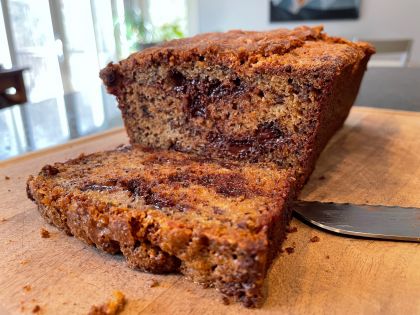Featured Posts
-
Featured
TC Farm Produce: Organic. Year Round.
Published: Feb 15, 2023
Read More -
Featured
Banana Bread
Published: Apr 05, 2022
Read More -
Featured
What do Hens Do on Lockdown?
Published: Apr 04, 2022
Read More
Perhaps the most overlooked aspect of eating healthy is a sharp knife. If you don't have a sharp, high-quality knife, then all of your prep work will take forever, be super frustrating and you'll just wind up ordering takeout way more often than you need to.
In almost every kitchen I visit, the knives are not sharp enough. This used to include mine before I spent $40 on a simple tool.
To get a feel for what a sharp knife can do, check out the video. (Obviously, a $40 sharpener won't get you quite this sharp.)
Note: If you have 'ever' sharp / style 'chef' knives, this doesn't pertain to you. You can't sharpen those very well (if at all). I'll make a post recommending some basic forged knives that can be sharpened later.
First a quick bit of background.
Honing a knife is important, but it is NOT sharpening.
Honing is when you rub a knife along those long metal sticks that come in most knife sets. This helps align the edge to be straight again after all that chopping. This prevents chipping of the knife and it does make it work better (up to a point).
Here is a basic hone from Wusthof or follow this link to an Amazon search that will show their generic brands as well.
You need a honing rod to maintain the knife edge, but you also need a sharpener.
Most forged or stamped knives are a traditional 20 degree angle at the very tip. This is a classic European knife edge.
Asian knives have traditionally been 15 degrees.
15-degree edges are much sharper and cut better in most situations. However, they dull faster, especially if you don't have a great cutting surface or are cutting hard things like bone or even lots of carrots.
If you have a decent sharpener and use it on an appropriate basis, I think most experts would now agree that a 15 degree blade is best for the home chef.
The super cheap sharpeners will do a 'good enough' job on your 20 degree knives. However, they aren't going to hold up as well as if you spend just a tiny bit more to get a double-bevel and a higher quality grind.
I read a ton of reviews. I've watched videos of people who took their knives and cut them on concrete to make them super dull before re-sharpening with various options. At the end of the day, I decided for my family a $40 option from Chef's Choice was best. I was hesitant to buy from them because I had never heard of them, but the reviews all seemed to indicate it was a great tool, so we gave it a shot.
Some of them can do serrated bread knives too, so that's nice.
This is the onethat I got, we have only 15 degree knives. It works with serrated, but NOT single sided bread knives.
This can convert your 20 degree knives into 15 (go for it!).
This is the same as the first one, but it also does 20 degree knives. It works with serrated, but NOT single sided bread knives. I've noticed that sometimes they are priced the same (like when I posted this article, but not when I bought mine)
Electric sharpeners are nice, they take any guess work out of it.
This model will get you a better edge and it can sharpen bread knives too. It makes a triple bevel for longer lasting and higher quality cuts. This one will convert any 20 degree knife into a 15 degree version.
However, they do heat up the knife more than a manual sharpener and that isn't ideal for the knife.
I am happy with my manual one, but I sure wouldn't complain about having this in my kitchen either.









Comments (1)
Angie:
Jul 06, 2017 at 03:46 PM
Good info - we recently upgraded from our cheap Kohl's knives (which were ridiculously dull) to a Zwilling Henckels set and I bought a Santoku on the side. It's getting to the point where I should probably get a sharpener with a 15 degree edge as well... I will admit though, after cooking with dull knives for 5+ years the sharp ones were a huge adjustment and I cut my fingers a lot! Another important tip per the instructions is to wash, dry, and hone the knives after each use to best preserve their edge.
Add a Comment
Add a Comment